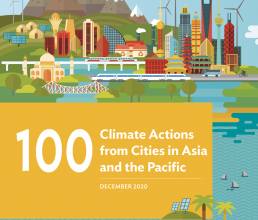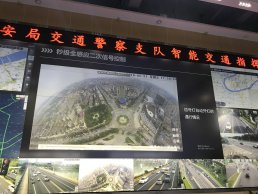First appeared in

Asian Development Bank
100 Climate Actions from Cities in Asia and the Pacific
Xiangtan is implementing PRC’s first low-cost median bus priority lane, combined with ‘green wave’ traffic light technology to improve efficiency of bus movement through traffic.
Xiangtan is implementing PRC’s first low-cost median bus priority lane, combined with ‘green wave’ traffic light technology to improve efficiency of bus movement through traffic.
Physical and digital infrastructure improvements to Xiangtan’s bus system are intended to improve services, incentivize public transportation, and reduce private vehicles on the road. Physically, 31 kilometers each of median bus lanes and peak-hour curbside priority lanes will help to improve services and make commuting faster. 70 new smart median bus stops and real-time information will also improve access. The network will connect Xiangtan’s main transport hubs, with designs based on predicted passenger flow and future growth.
200K
TONS OF CO₂ EQUIVALENT REDUCED PER YEAR
TONS OF CO₂ EQUIVALENT REDUCED PER YEAR
Digitally, the city’s Intelligent Transport System (ITS) is being modified to shift the focus from cars to instead prioritize buses and pedestrians. This means that the existing system’s 225 traffic lights and 1,100 traffic sensors will be adjusted to allow more efficient public transport through priority signalling and green waves for buses. Green waves are created when multiple sets of lights in a row turn green when approached by one type of vehicle. This system will be the first in the PRC with bus-designated traffic lights and a greenwave system.
This project is part of the Xiangtan Low-Carbon Transformation Project, covered by a $150 million loan from the ADB.

Dedicated median bus lanes, located in the middle of the road, result in more convenient travel by allowing buses to bypass traffic (photo by Na Won Kim).
The Challenge
Public transport use in Xiangtan is relatively low at around 19%. By contrast, private vehicles are popular among the city’s inhabitants, with ownership increasing by over 450% between 2008 and 2016.
Co-Benefits
Health Increased public transportation use will result in fewer pollutants, improving air quality and public health in Xiangtan.
Economic A more efficient transport system will reduce costs associated with transportation for residents, while also making commuting faster and more reliable.
Social The city aims to create a rapid, safe, and efficient movement of buses through the intersections and reduce travel time for bus users, making traveling by buses more appealing.

